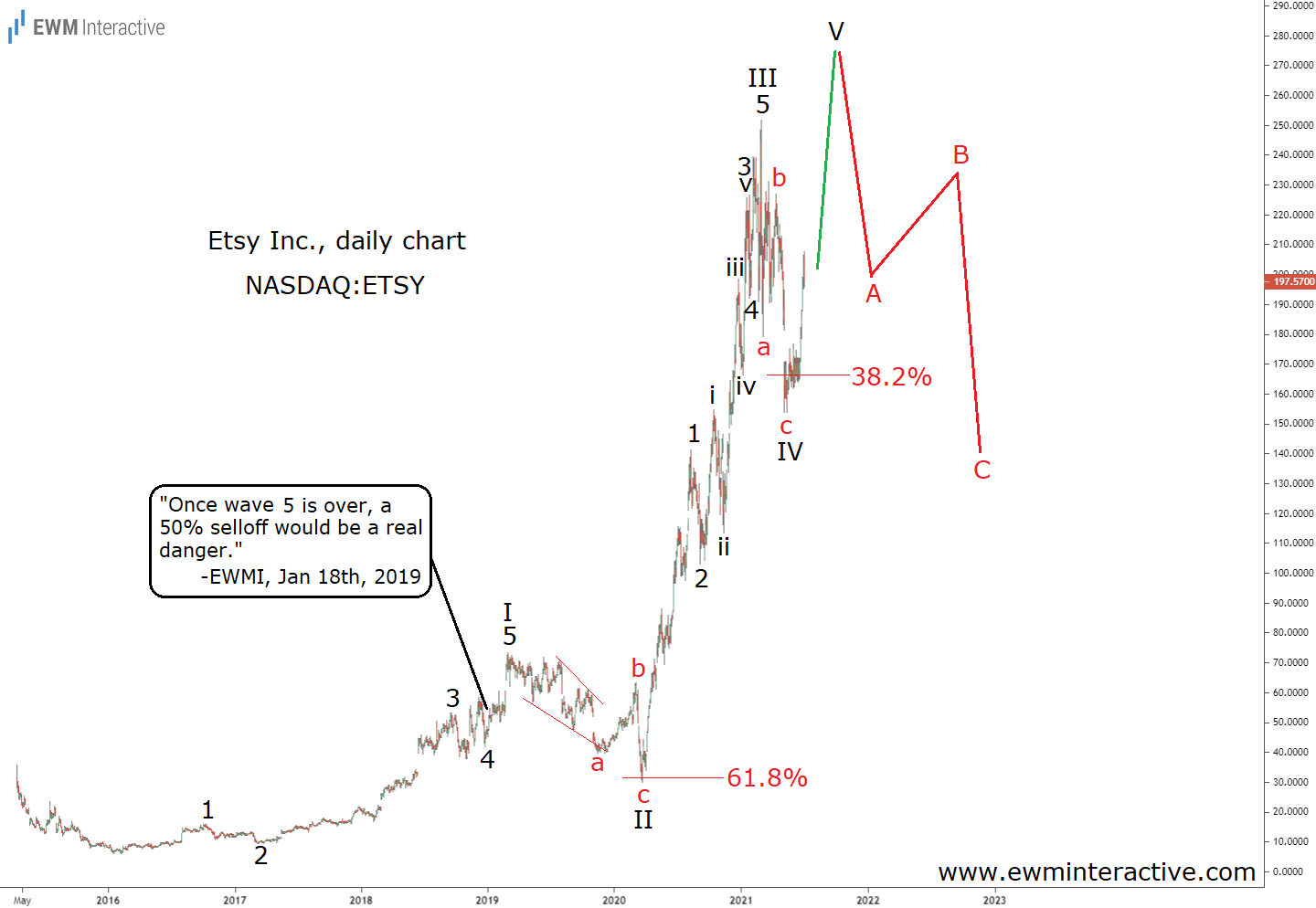The last time we wrote about Etsy (NASDAQ:ETSY) was on Jan. 18, 2019. The stock was trading close to $54 a share and was up a staggering 803% from its January 2016 low. Etsy’s profits could not possibly justify its then $6.6B market cap, but with sales growing so rapidly, some people were already comparing it to Amazon (NASDAQ:AMZN).
Well, even Amazon stock has had its low points and Etsy was going to have its own, as well. A quick look at its daily chart made us think a notable correction can be expected. The surge from the 2016 low at $6.04 looked like an almost complete impulse pattern.
The Elliott Wave principle states that a three-wave retracement follows every impulse. So, we thought once the fifth and final wave of the uptrend was over, “a 50% selloff would be a real danger.” The fifth wave ended at $73.35 two months later, in March, 2019. Over the following 12 months, Etsy stock fell 59.2% to a low of $29.95 during the March 2020 crash. Well done, Elliott Wave.
Bears Waiting Patiently For Etsy Stock To Reach New Record
But as it often happens in the markets, courage and some spare cash can be a wonderful combination for any investor. In March 2021, Etsy stock reached a new all-time high above $251, before dipping to $154 two months later. Currently trading slightly below $200, is this online marketplace operator a good bet now at its new $25B valuation? Let’s find out.

The daily chart above put Etsy's entire uptrend from $6.04 into Elliott Wave context. The structure of that phenomenal surge resembles a textbook five-wave impulse, labeled I-II-III-IV-V. The five sub-waves of waves I and III are clearly visible, as well.
The corrective decline culminating in the 2020 coronavirus crash is marked as wave II. Note that waves II and IV ended shortly after touching the 61.8% and 38.2% Fibonacci levels, respectively. If the count so far is correct, Etsy is now rising in wave V.
Fifth waves typically exceed the top of the respective third wave, meaning targets above $252 are plausible. We wouldn’t be surprised to see the stock actually approaching the $300 mark. Once there, however, the same principle that caused the wave II decline would be in operation once again. Only this time at an even bigger scale.
Correction usually erases the entire fifth wave. Assuming a bearish reversal around $300, that would be another ~50% plunge to the support of wave IV near $150. Something most investors would rather avoid, if possible.
